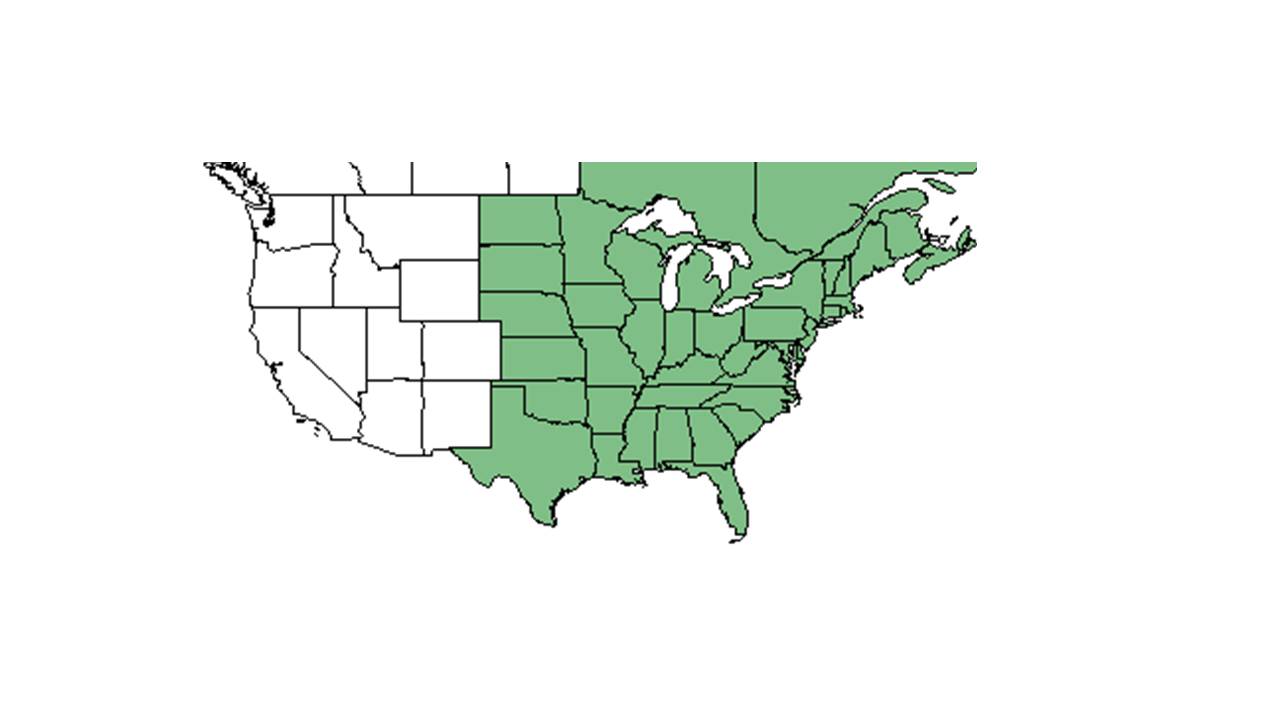Difference between revisions of "Ageratina altissima"
| Line 24: | Line 24: | ||
Ageratina altissima competes by allelopathy. Corbett and Morrison found out that aqueous extracts from roots and especially shoots decreased the rate of germination, percentage of germination, and size of germinated Lettuce and Radish seeds in Petri dishes as well as in pots of forest soil. <ref name="Corbett et al 2012"> Corbett, B. F. and J. A. Morrison (2012). "The allelopathic potentials of the non-native invasive plant Microstegium vimineum and the native Ageratina altissima: two dominant species of the eastern forest herb layer." Northeastern Naturalist 19: 297-312. </ref> | Ageratina altissima competes by allelopathy. Corbett and Morrison found out that aqueous extracts from roots and especially shoots decreased the rate of germination, percentage of germination, and size of germinated Lettuce and Radish seeds in Petri dishes as well as in pots of forest soil. <ref name="Corbett et al 2012"> Corbett, B. F. and J. A. Morrison (2012). "The allelopathic potentials of the non-native invasive plant Microstegium vimineum and the native Ageratina altissima: two dominant species of the eastern forest herb layer." Northeastern Naturalist 19: 297-312. </ref> | ||
===Habitat=== <!--Natural communities, human disturbed habitats, topography, hydrology, soils, light, fire regime requirements for removal of competition, etc.--> | ===Habitat=== <!--Natural communities, human disturbed habitats, topography, hydrology, soils, light, fire regime requirements for removal of competition, etc.--> | ||
| − | It grows in shady to partially shady areas. It is common in the eastern deciduous forest herb layer. <ref name="Corbett et al 2012"/>However, it can also be found in woods, thickets, roadsides, old fields, clearings, bluffs and margins of waterways.<ref name="Walck et al 1997" | + | It grows in shady to partially shady areas. It is common in the eastern deciduous forest herb layer. <ref name="Corbett et al 2012"/>However, it can also be found in woods, thickets, roadsides, old fields, clearings, bluffs and margins of waterways.<ref name="Walck et al 1997"/> |
===Phenology=== <!--Timing off flowering, fruiting, seed dispersal, and environmental triggers. Cite PanFlora website if appropriate: http://www.gilnelson.com/PanFlora/ --> | ===Phenology=== <!--Timing off flowering, fruiting, seed dispersal, and environmental triggers. Cite PanFlora website if appropriate: http://www.gilnelson.com/PanFlora/ --> | ||
Revision as of 08:34, 10 June 2015
| Ageratina altissima | |
|---|---|

| |
| Scientific classification | |
| Kingdom: | Plantae |
| Division: | Magnoliophyta - Flowering plants |
| Class: | Magnoliopsida - Dicotyledons |
| Order: | Asterales |
| Family: | Asteraceae ⁄ Compositae |
| Genus: | Ageratina |
| Species: | A. altissima |
| Binomial name | |
| Ageratina altissima (Chapm.) Pennell | |

| |
| Natural range of Ageratina altissima from USDA NRCS Plants Database. | |
Contents
Description
Distribution
Ecology
Ageratina altissima competes by allelopathy. Corbett and Morrison found out that aqueous extracts from roots and especially shoots decreased the rate of germination, percentage of germination, and size of germinated Lettuce and Radish seeds in Petri dishes as well as in pots of forest soil. [1]
Habitat
It grows in shady to partially shady areas. It is common in the eastern deciduous forest herb layer. [1]However, it can also be found in woods, thickets, roadsides, old fields, clearings, bluffs and margins of waterways.[2]
Phenology
It is a perennial, weedy herb that flowers and fruits in late summer to fall. [1]
Seed dispersal
It disseminates its mature seeds (achenes) in fall and winter. Each plant can produce thousands of seeds at a time. [3]
Seed bank and germination
Ageratina altissima usually needs light to germinate. Ageratina altissima exhibits a Type II response to stratification: Germination in the spring generally can occur at a lower temperature than germination in the fall as a result of dormancy loss in the winter. Thus, germination in the spring is more likely because of relatively higher temperatures and lower temperature requirements than in fall. [2]
Fire ecology
It is most abundant after a late-season (early October) burn. [4]
Pollination
Use by animals
It is avoided by many insects. [1]
Diseases and parasites
Conservation and Management
Cultivation and restoration
Photo Gallery
References and notes
- ↑ 1.0 1.1 1.2 1.3 Corbett, B. F. and J. A. Morrison (2012). "The allelopathic potentials of the non-native invasive plant Microstegium vimineum and the native Ageratina altissima: two dominant species of the eastern forest herb layer." Northeastern Naturalist 19: 297-312.
- ↑ 2.0 2.1 Walck, J. L., C. C. Baskin, et al. (1997). "Comparative achene germination requirements of the rockhouse endemic Ageratina luciae-brauniae and its widespread close relative A. altissima (Asteraceae)." American Midland Naturalist 137: 1-12.
- ↑ Lau, J. M. and D. L. Robinson (2010). "Phenotypic selection for seed dormancy in white snakeroot (Eupatorium rugosum)." Weed Biology & Management 10: 241-248.
- ↑ Pavlovic, N. B., S. A. Leicht-Young, et al. (2011). "Short-term effects of burn season on flowering phenology of savanna plants." Plant Ecology 212: 611-625.